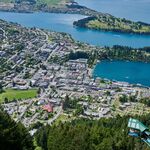nfitz
Superstar
No.Isn't the intent of this line to intercept E-W trips that were going down to Line 2?
No.Isn't the intent of this line to intercept E-W trips that were going down to Line 2?
So what's the intent of the line ? Ppl will be using it to go crosstown or locally E-W
Yes.pl will be using it to go crosstown or locally E-W
Absolutely. Which is why the service will be more frequent than it specifically needs to be on day 1.Agree, but the premise of this line included building a transit oriented corridor that added density, and hence ridership, beyond what a bus based service could offer.
Until such as time as both you and I are worm food? Yes. There is a huge amount of capacity built into the line that will be available when the time comes, and only people who are living in some sort of fantasy world where SimCity rules apply to the construction of the built form of Toronto think otherwise.Certainly, two car trains on Day 1 will be ample. The debate is whether there will still be room for all of us on 3-car trains - when we bring our walkers for some future opening day anniversary reunion.
Nor am I.Personally I'm not worried.
- Paul
Looking at this photo, the train kind of looks like a mamba snake with the way the headlights are arranged and the shape of the nose, as well as the overall length of the train
That will bring back Line 1 memories!Just wait till everyone realizes that the trains are stopping far away from the street entrance and they would have to run 35 meters to catch the train.
Has it actually been stated that trains in service will stop at the far end of the surface platforms?Just wait till everyone realizes that the trains are stopping far away from the street entrance and they would have to run 35 meters to catch the train.
With two-car trains, the trains will likely have a door near the platform entrance. Don't have to run to the door next to the driver.Has it actually been stated that trains in service will stop at the far end of the surface platforms?
They been doing this regularly plus there is a huge screen install in the middle of the two tracks at the front for operators to see the train's aligning. This requires the train to stop far away from the streets for all far side stops.Has it actually been stated that trains in service will stop at the far end of the surface platforms?
June 6, 2025:
The new sign is up forScience CentreDon Valley station:
View attachment 656990
Credit: @James1256
All trains will stop at the forward end of every single platform. All of the safety equipment has been configured for this - bollards to prevent access to the intercar areas, platform viewing displays, etc.Has it actually been stated that trains in service will stop at the far end of the surface platforms?




